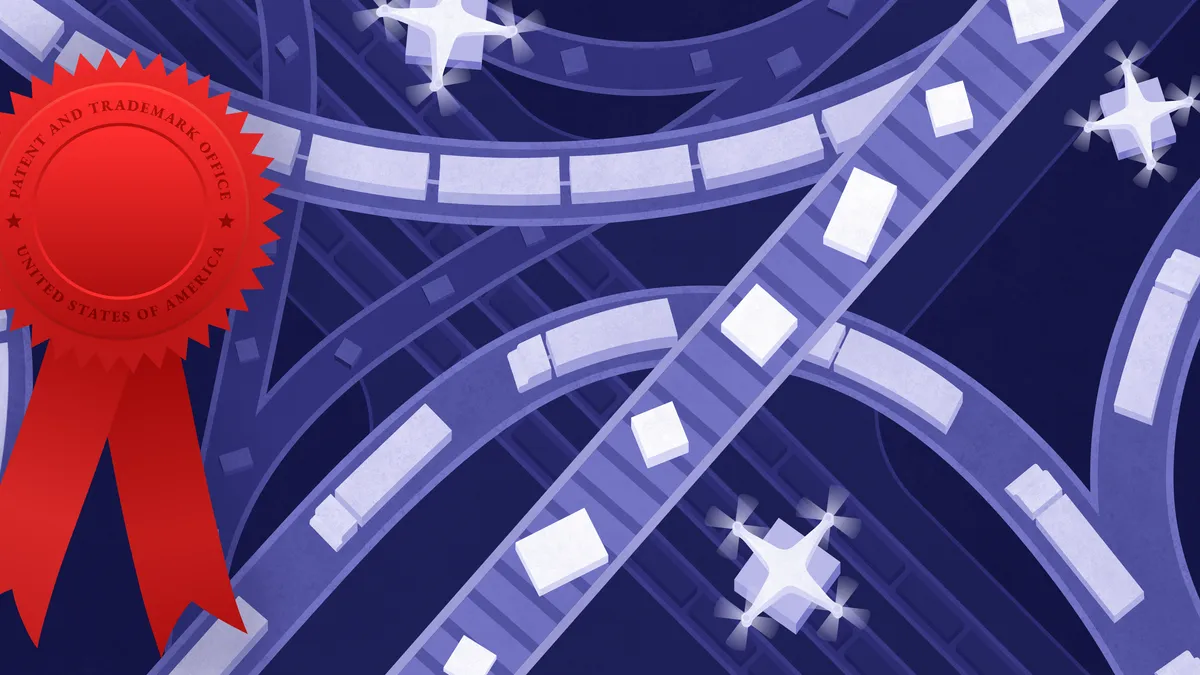This is Patent Pending. Supply chain-related patent applications are published every day and this is where we'll talk about the ones that could have the biggest impact on the supply chain and the ones that challenge the norm. We want to give you an idea of where supply chains are heading and what the industry is thinking. Read the previous issue here.
Cross docking, no driver needed

Cross docking can cut down on storage requirements and keep companies running lean.
Lowe's recently said it planned to add 50 cross docks to its operations — an impressive endorsement of the technique. But Toyota lays out its plan to further automate the cross-docking process in a patent application published this month.
Toyota envisions a system that uses an operations management system to control the flow of freight, which the patent says could be traveling on autonomous trucks. The OMS would determine how many trucks are needed for a given freight load and generate departure times for the trucks. Information on the freight including its size and weight would be used to determine the number of trucks needed. This information could be provided via bar codes. The system would also assign a guide vehicle to an autonomous platoon. And the patent says that a bus that carries workers from one place to another can be used as a guide or one of the transportation vehicles.
The OMS will determine the maximum number of autonomous transportation vehicles that will be able to follow this guide using a "guidance vehicle determination unit," the patent reads. It will group transportation vehicles with guide vehicles based on the destination and freight being carried. When it is time for trucks to leave the first docking location, they will form a line behind the guide vehicle and autonomously follow at a predetermined "vehicle-to-vehicle" distance until reaching the next docking location.
The patent says that this would "reduce the number of people (drivers) in transportation, and thus the efficiency of transporting the freight ... may be further improved."
Read up:
-
Lowe's plans to add 50 cross docks, 4 fulfillment centers in pursuit of omnichannel supply chain
-
Volvo's autonomous vehicle to haul DFDS containers to Swedish port
Gamifying product tracking and data collection

After an item arrives safely at a home or office, recipients don't have much incentive to tell the shipping company anything else. They got want they wanted and the transaction is done.
Amazon sees this as a potential blind spot as it tries to collect customer data so it can make a recommendation about products to buy. If someone buys a hard drive, but two customers live at the same address then how do you know who is actually using it? Make it a game, Amazon writes in a patent application published late last month.
The idea is that when customers get orders they will scan a bar code or QR code with their smartphones or tablets. If this scan is associated with an order from Amazon then the customer will be credited a digital token or anything else that "represents a collectible and tradable entity." These assets could also be used to get customers into brick-and-mortar locations, providing a large number to someone who visits a particular location during a particular time, according to the patent. The system would also allow customers to take pictures of purchased products and see them in an augmented reality environment with other "virtual assets" (purchased products).
The digital tokens could be used to buy items on the marketplace.
The system would allow Amazon to verify delivery to the right person by matching information on the profile that ordered the product and the profile that scanned the product. As this scales to more customers it would allow Amazon to use clustering techniques to group people with similar virtual assets to help improve product recommendations.















